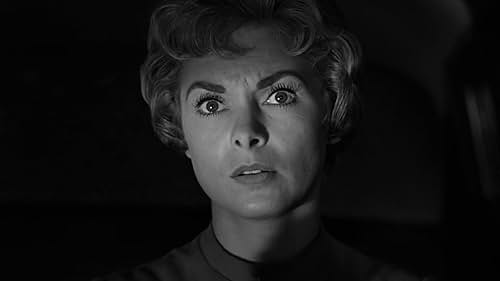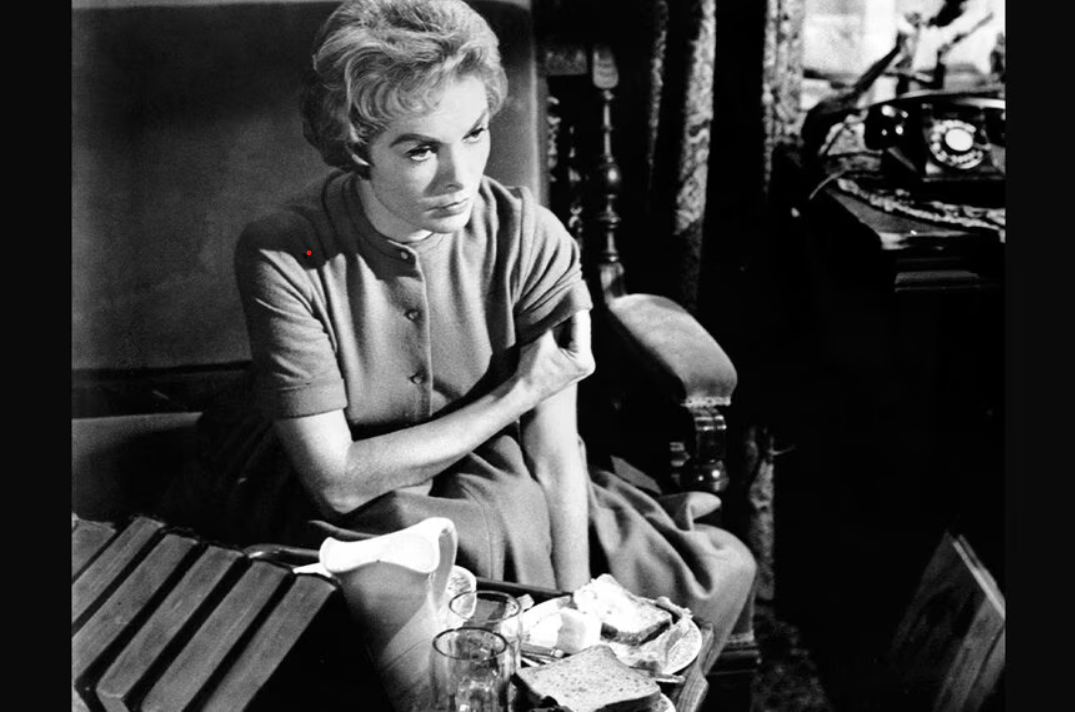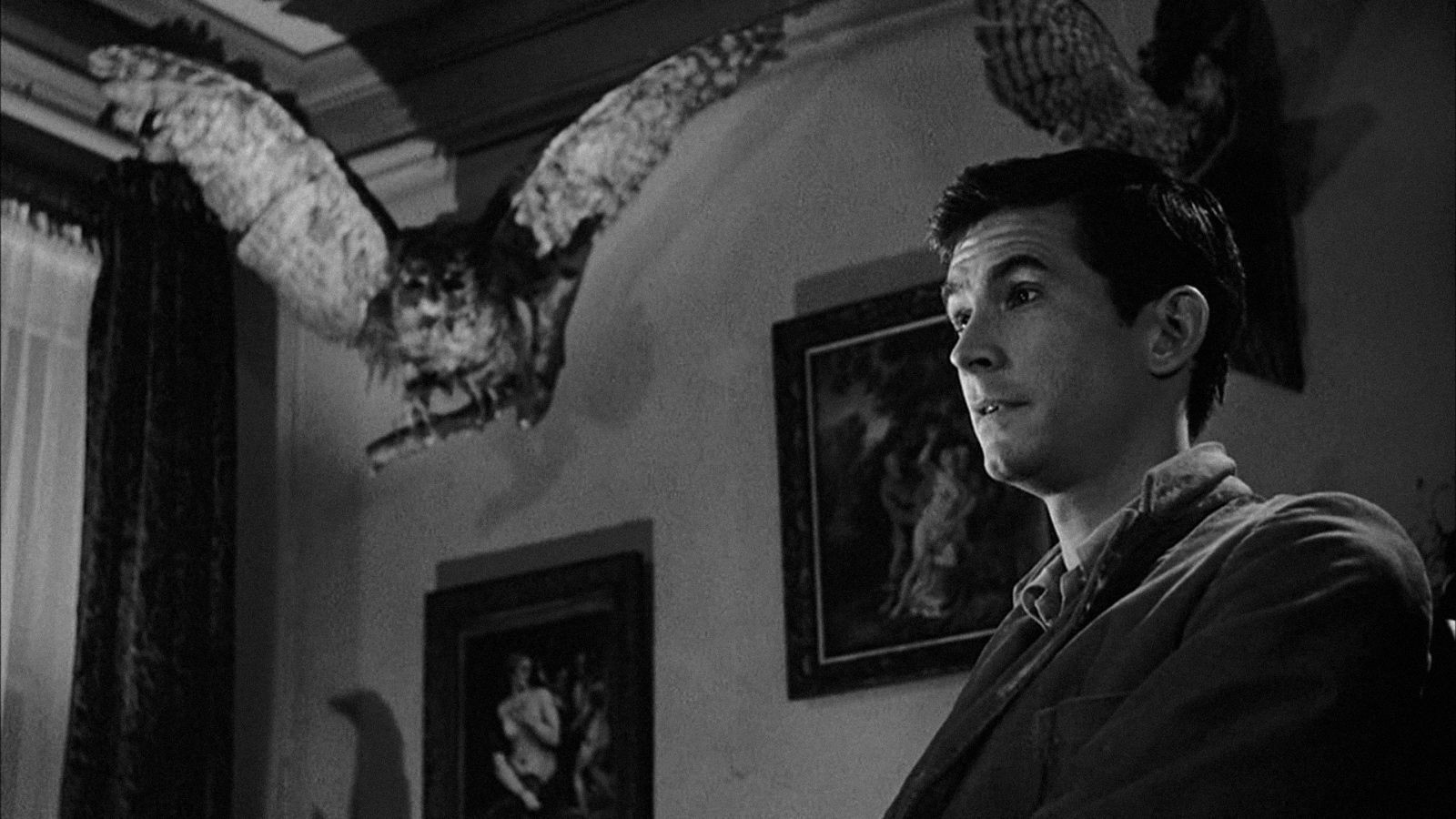By Afroditi A. Karagianni,
A few days ago, I came across an online article discussing Psycho, a film I had only recently watched. There, to my surprise, I learned that for the –hardcore– horror genre fans around the world, the September the 8th coming up is a big deal, as it marks exactly 65 years since the release of Alfred Hitchcock’s Psycho (1960) in the US, a film this influential that changed the trajectory of the horror genre forever. How time flies, right?
Psycho opens with Marion Crane (Janet Leigh), your typical real estate secretary, who while desperately infatuated with her soon-to-be-divorced significant other (John Gavin), decides to steal 40,000 from a somewhat ghoulish client to cover for her boyfriend’s debts and expedite their own marriage. Marrion leaves Phoenix with the money, changes cars, gets momentarily followed by a police officer and finally stops a couple of miles from Fairville (where her boyfriend lives) when she encounters a heavy rainstorm she cannot bear to drive through. She soon meets Norman Bates (Anthony Perkins), whose family owns the motel next to the main road, and strange things quickly begin to unfold as Norman reveals his true colors.

To give you a better insight, Psycho’s screenplay, written by Joseph Stefano, was based on the 1959 novel of the same name by Robert Bloch and its budget is estimated to have been around 800,000, which makes it a film rather cheap for the time it was shot. In addition, Hitchcock himself deliberately wanted the movie to look like a cheap exploitation film and thus filmed it with his most inexpensive of gear, in plain black and white. Still, Psycho made history and still poses as a milestone for horror films, as it subverted the expectations for the genre’s pieces back in the day and continues to inspire thousands of filmmakers today. What is it that makes it so endearing?
Psycho goes through its protagonists as if they are past season’s clothing, yet manages to do so in a completely natural manner that supports the story’s progression. Marion, Norman, a detective, Marion’s lover and Marion’s sister are all the center of attention at some point story wise and offer viewers the ability to explore different perspectives of the plot, a fact that enhances the movie’s general appeal. While discussing the piece’s allure, it would be a terrible mistake not to mention its superb setting and cinematography, which add to the earie and creepy vibe the director aims to create. The motel, the house, the lighting, the stuffed birds and every other element that appears on our screen have an integral part to play in setting the film’s dark and twisted tone. Of course, symbolism and indirect hints from Hickock could not be absent from a piece of the like and make their appearance in numerous parts of the story. For instance, the stuffed birds existent constitute an important hint which reveal part of Norman’s troubled psyche, since bird stuffing is, to him, a highly beloved an activity he obsesses over.
What one admires most about Psycho is the superb acting taking place coupled with its imaginative plot twists, which truly make the recipe for (horror) perfection. In truth, all actresses and actors involved did a phenomenal job, while Anthony Perkins to me delivers the performance of a lifetime. One minute, Norman is sweet, naïve and tender. The next, he turns into a cold, heartless and downright bizarre man, that sends chills down your spine, often just by glancing at his eyes. Not to spoil this for anyone that has not already seen the film, but I consider the scene where the “mother” runs towards Marion’s sister and the one where Perkins smiles while directly looking at the camera two of the most frightening horror scenes ever created, that have yet to be surpassed.

Finally, psycho manages to shock, appall and terrify mainly because it delves deeply into the human psyche and reveals its scariest and most covert parts. At its core, despite its shocking twists, unsettling music and elaborate setting, it is a story about the subconscious battle between good and evil that exists in everyone’s minds. At the same time, themes like loneliness, anger, regret, grief, rage and guilt are all explored in the most unique of ways, offering an invaluable window for self-reflection and profound thinking to its audience.
Cinema would be dimmer if Psycho was never created, and horror today would absolutely not have been the same. If you have yet to see the film, I suggest you waste no time, and let the creator of Rear Window, Rope and Vertigo take you on a horror journey the likes of which you have never embarked on.




